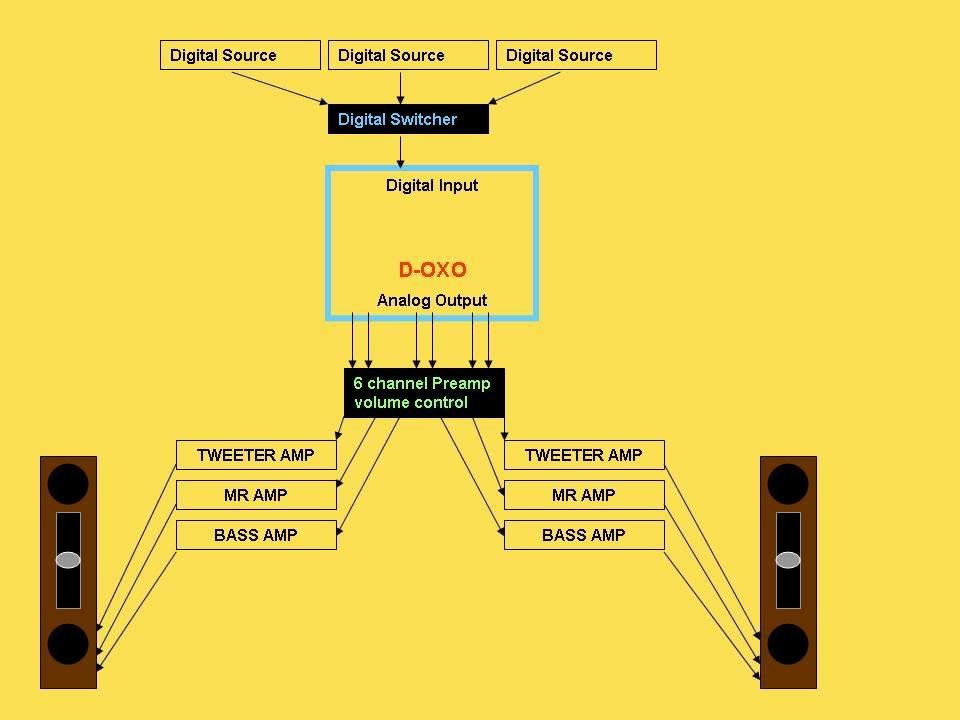I find I am spending the majority of my work / spare time in my home office so I am going to upgrading that setup. My plan is to build a dedicated Mac Pro based music server capable of 24/192. I am looking at both the Berkley Alpha DAC and the Weiss Minavara DAC, hoping for an audition of these or similar DACs. Will be relocating my circa 2001 RM40's (spiral) to the home office and my 626Rs to the living room for HT duties.
Has anyone converted RM40's from passive to active? What are your impressions? How involved? Estimated costs? Other then extra amps and Berringer, is it basically just wire?
Seems like a lot of data conversions going from digital to analog back to digital back to analog.
Thanks
The D-OXO can be added to any of the VMPS Ribbon Monitors.
It involves:
Purchasing the D-OXO package $750 which includes:
1) D-OXO
2) Programming for your speaker and drivers
3) Digilog Bridge for your speakers and 2way biamped operation
4) An extra pair of binding posts
5) Any caps or resistors needed for your drivers
6) Instructions
If you know your way around a speaker and have the ability to solder you need to do the following:
1) Install binding posts
2) Direct wire Tweeter, All panels, and both Woofers to their specific binding posts
3) Add any in line parts.
4) Procure amps to drive the sections depending on rather you are biamping or tri-amping
As far as purchasing an exotic DAC only to run it through the ADC of the D-OXO. . .It might be more prudent to use the diagram below and save the money for a 4-6 channel preamp and the amps themselves. You can also send your D-OXO to Scott Endler to have the on-board DACs upgraded/modded.
http://mysite.verizon.net/vze4c5pt/id14.htmlIf your only source is the music server, then it would be wise and cheaper to consider keeping the signal "DIGITAL" from the server to the D-OXO, and the only conversion occurs as the signal exits the D-OXO to your 4-6 channel preamp volume control.
Where can you find a 4-6 channel volume control? Any of the now "out of date" high quality PrePros out there that have a really high quality volume control and 5.1-7.1 analog inputs will do. Theta, Bryston, NuFORCE, Krell, Lexicon, and any number of them are available used for pennies on the dollar. You are NOT looking for anything except the ability to input 4-6 analog channels and have volume (gain) control over them.
You then run the PrePro outputs to your amps and from the amps to the respective binding posts.
Brian would have to offer up what caps or parts might also be needed (if any) for your respective drivers to adjust efficiencies if needed beyond the capabilities of the D-OXO's abilities.
